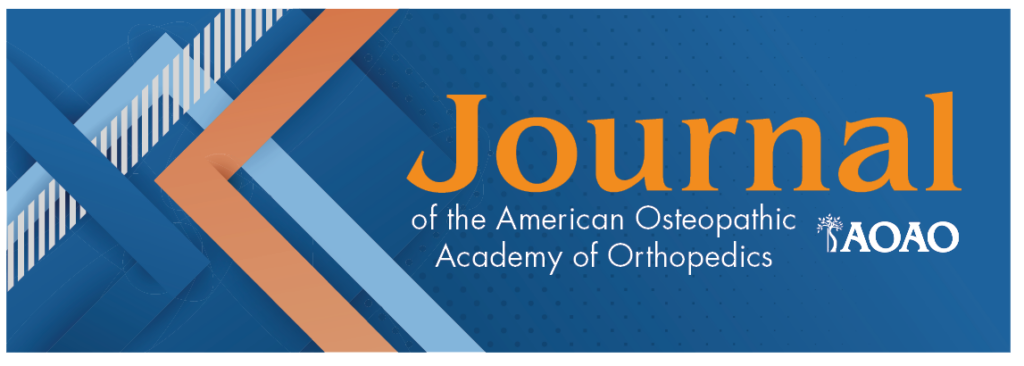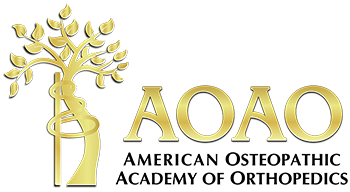Sarthak Parikh, DO; Jonathon Gurule DO; Travis Small DO
Oklahoma State University Department of Orthopedic Surgery
Saint Francis Health System Tulsa OK 74136
http://doi.org/10.70709/hn5ml037
Abstract
Introduction
Polymethyl methacrylate (PMMA), often referred to as bone cement, is an acrylic polymer widely utilized in orthopedics for both implant fixation and osseous defect filling. Bone cement is used in a variety of orthopedic procedures including arthroplasty, vertebroplasty and orthopedic trauma. PALACOS LV and Simplex HV are two of the many bone cement products used by orthopedics surgeons. Many clinically relevant factors have been shown to affect curing time of these products. A prolonged curing time can increase the duration of surgery, cost of surgery and complication risk.
Methods
In this study, 14 batches each of PALACOS and Simplex HV cement were mixed at different temperatures to compare the effect of heat on curing time. The cement, consisting of MMA powder and MMA stabilizer liquid, underwent mixing in a 70°F room. Prepackaged components were combined in a 10cm x 10cm container, stirred for 30 seconds, and formed into 2 spheres (2cm in diameter). The spheres were subjected to either a 106°F or 70°F saline bath, with the time to harden recorded. The curing process was considered complete when a second thermostat probe could not make an indentation.
Results
The average time to curing in the warm (106°F) and room temperature (70°F ) of Simplex HV groups were 337.08 ± 27.20 seconds and 725.77 ± 127.20, respectively. By placing the mixture in a warm 106°F saline bath, the time to stiffening in the warm bath was reduced by 388.69 seconds or about 6.49 minutes when compared to the room temperature bath (CI 320.64, 364.28; P<.001). The average post set temperatures for the warm group (98.96 ± 3.37°F) were higher than the room temperature group (70.72 ± 1.60°F). The average time to curing in warm (106°F) and room temperature (70°F ) groups for PALACOS were 325.71 ± 23.23 seconds and 813.57 ± 91.12, respectively. By placing the mixture in a warm 106°F saline bath, the time to stiffening in the warm bath was reduced by 487.86 seconds or about 8.13 minutes when compared to the room temperature bath (CI 312.30, 348.95l; P<.001). The average post set temperatures for the warm group (97.9 ± 1.95°F) were higher than the room temperature group (69.99 ± 1.40°F).
Conclusion
This study concludes that placing bone cement in a 106°F saline bath can reduce curing time by up to 8.13 minutes. By reducing the OR time, hospitals can improve efficiency, patient satisfaction and procedure cancellation rates, while shortening length of stay in the ICU, patient recovery, waiting times and cost.
Keywords: Bone Cement, Arthoplasty, PMMA
Introduction
Polymethyl methacrylate (PMMA), often referred to as bone cement, is an acrylic polymer widely utilized in orthopedics for both implant fixation and osseous defect filling.(1,2) It’s synthed by blending a liquid and powder component together. The liquid component is composed of the monomer methyl methacrylate (MMA), the activator N,N-dimethyl-p-toluidine (DMPT), an inhibitor/stabilizer hydroquinone and a die. The powder component is composed of the polymer PMMA, initiator benzoyl peroxide, radioopacifiers like zirconium dioxide or barium sulfate, antibiotics or dyes.(1,3) When these ingredients are combined, the liquid monomer surrounds the pre-polymerized powder, resulting in a homogenous mixture.(1–3) This is followed by the waiting period, during which the cement takes on a low viscosity with strong adherence. As it progresses to the working phase, it assumes a dough-like texture that continues to thicken. Overtime, this material solidifies releasing heat and functions by serving as a ‘grout’.(1–3) It enhances the bond between the implant and bone by filling microscopic gaps around them. These compounds possess no inherent adhesive qualities and rely on the mechanical interplay of uneven surfaces, such as those of bone and metal.(1–3)
In orthopedic medicine, bone cement is integral to a variety of procedures. During arthroplasty, it fixes the cemented implants to the bone.(4) In treatments like vertebroplasty and kyphoplasty, bone cement is administered into fractures to restore vertebral height, augment stability, and mitigate pain.(5) Bone cement enhances the anchoring of implants to the porous bone matrix.(2) Bone cement can be used to fill defects and act as a cement spacer to temporize fractures. Furthermore, bone cement is instrumental in delivering antibiotics locally, targeting infections localized to the area surrounding the implant. Antibiotics like gentamycin, tobramycin, erythromycin cefuroxime, vancomycin and colistin can be added to the powder component.(6) This localized antibiotic regimen sidesteps systemic exposure and ensures a sustained concentrated therapeutic level while minimizing systemic adverse effects.(6)
PALACOS LV and Simplex HV are two of the many bone cement products manufactured by Haraeus Medical.(7) Different biomedical companies produce slightly different types of bone cement.(7) Both products release antibiotics, however the vancomycin loaded PALACOS resulted in a higher cumulative elution of vancomycin compared to vancomycin loaded Simplex HV.(7) Both products-maintained cement strength after the low dose vancomycin, but high dose vancomycin reduced the compression strength after cement aging. Simplex HV also demonstrated higher values of ultimate tensile strength, while PALACOS displayed similar porosity and higher strain to failure.(7) Nevertheless, both bone cement products are acrylic based and have good heat resistance capabilities.
Many clinically relevant factors have been shown to affect curing time. Decreasing the powder-liquid ratio, increasing the of cement beads, and incorporating larger concentrations of vitamin E or additives can increases curing time.(8,9) In contrast, high humidity and elevated temperature can reduce cement curing and setting time, along with excessive manual handling and vacuum mixing.(8,9) Therefore, is recommended that the bone cement be stored at 23°C.(8,9) Often, surgeons will attempt to intraoperatively heat the cement using various non-standardized methods to reducing setting time and save operating room (OR) time and cost. Current literature demonstrates poor documentation of these non-standardized methods. One such method is the use of warm water irrigation, which is believed to accelerate the transformation of PMMA into a doughy consistency suitable for implantation. The purpose of this study is to test the effect of warm and room temperature water irrigation on the rate of hardening in both PALACOS LV and Simplex HV. The hypothesis suggests that warm water might expedite the solidification process of the bone cement.
Methods
This study was exempt from IRB (Institutional Review Board) oversight as it does not include human subjects. Fourteen batches of PALACOS and 14 batches of Simplex HV were used in this study. The cement was stored in 70°F facility and mixing occurred in a 70°F room. Each batch is composed of MMA powder and MMA stabilizer liquid. In the Simplex HV batch, 40 grams of powder was combined with 20 grams of liquid. In the PALACOS batch, 40.3 grams of powder was mixed with 20 grams of liquid. All measurements and products were prepackaged. The mixing process began when both package components were placed in a mixing container (10cm x10cm) and mixed with a spatula for 30 seconds. This was based on the instruction manual for both products. The mixing time was not recorded. Once the homogenous dough formed a rubbery, elastic, nonstick mixture, it was separated into 2 spheres 2cm in diameter. A thermostat probe was placed in the center of each sphere and then placed in either a 106°F or 70°F saline bath. The time to harden in seconds was then recorded for each group. The curing process was deemed complete once a second thermostat probe was unable to make an indentation on the surface of the sphere. Descriptive statistics and a student’s t test were completed with Excel Microsoft office program. Batch 6 was removed due to contamination.
Results
Table 1a and 1b shows the time to curing completion and temperature at curing completion (post set temperatures) for Simplex HV. The average time to curing in the warm and room temperature groups were 337.08 ± 27.20 seconds and 725.77 ± 127.20, respectively. By placing the mixture in a warm 106°F saline bath, the time to stiffening in the warm bath was reduced by 388.69 seconds (CI 320.64, 364.28; P<.001) or about 6.49 minutes when compared to the room temperature bath. The average post set temperatures for the warm group (98.96 ±3.37°F) was higher than the room temperature group (70.72 ± 1.60°F). The maximum temperature in the warm group was 34.3 degrees warmer than the room temperature group.
Table 2a and 2b shows the time to curing completion and temperature at curing completion (post set temperatures) for PALACOS HV. The average time to curing in the warm and room temperature groups were 325.71 ± 23.23 seconds and 813.57 ± 91.12, respectively. By placing the mixture in a warm 106°F saline bath, the time to stiffening in the warm bath was reduced by 487.86 seconds (CI 312.30, 348.95l; P<.001) or about 8.13 minutes when compared to the room temperature bath. The average post set temperatures for the warm group (97.9 ± 1.95°F) was higher than the room temperature group (69.99 ± 1.40°F). The maximum temperature in the warm group was 29.4 degrees warmer than the room temperature group. Figure 1 and 2 illustrates the trend in time to curing between warm and room temperature saline baths between Simplex HV and Palacos LV.
Discussion
Bone cement is used in a variety of orthopedic procedures to fix prosthetic components, fill voids, stabilize and support bone integrity. Occasionally, warm water is employed to accelerate the curing process and minimize wait times in the operating room. This theory, however, has yet to be substantiated by objective data. The purpose of this study is to test the effect of warm and room temperature water irrigation on the rate of hardening in two different types of bone cement mixtures. According to this study, warm water irrigation can reduce the curing time of bone cement by up to 8.13 minutes. With an average cost of $46.04 per minute, this can theoretically help save $374.30 in procedures using bone cement.(10) By reducing the OR time, hospitals can improve efficiency and cost.
By warming the cement with 106°F saline, the overall temperature of the cement increased by 34.3°F in the Simplex HV group and 29.4°F in the PALACOS LV group when compared to the control group. The maximum temperature of the bone cement recorded was 107.2°F, 20.2 degrees lower than the minimum temperature to cause thermonecrosis and 9.4 degrees lower than the temperature necessary to cause reduced bone formation.(11–13) In animal models, thermonecrosis occurred above 53°C or 127.4°F when applied for greater than 1 minute.(11) At 47-55°C (116.6°F – 131°F) bone formation reduced, leading to bone resorption and fat cell degeneration.(12) Therefore, although a 106°F warm saline bath can increase bone cement temperatures, this temperature rise is biologically safe as long as the cement is applied to bone that has not been subject to other means of thermal heating.
Thermal heating of bone can occur during reaming of the proximal tibia, distal femur or proximal femur in total joint arthroplasty.(13) Intramedullary reaming produces an average increase in bone temperature of 6.9°C ± 4.1°C, with a peak temperatures range from 34.9°C to 49.4°C.(8) Typical medullary reaming techniques often do not cause bone necrosis, however, when starting with a reamer larger than the medullary canal diameter, the maximum temperature of the bone increased.(13) Therefore, when incorporating bone cement in procedures involving intramedullary reaming, it may be beneficial to employ techniques that reduce thermal heating of the bone prior to administering bone cement. For instance, by reducing the of the initial reamer, irrigating with cold or normal saline, shortening the reaming duration and employing a reamer-irrigation aspiration system, physicians can reduce the risk of thermonecrosis and associated fat embolism when reaming and using bone cement.(14–16)
There are several limitations to this study. This study was not conducted in an operating room and humidity was not measured. Although humidity was controlled and procedures for both groups occurred in the same time and location, its value was not reported. One of the Simplex HV samples was lost, which reduces the sample of that group. Higher levels of humidity may been associated with increased risk of thermal necrosis, reduction of integrity and prolonged setting time.(17,18)
Furthermore, the bone cement was not placed in bone so the risk of thermonecrosis was unmeasurable. Future studies should concentrate on assessing the clinical impact of heating bone cement by evaluating the risks of thermonecrosis using saline-heated bone cement, controlling humidity and considering the thermal effects of reaming.
In conclusion, subjecting bone cement to warm saline baths for 30 seconds statistically significantly reduced the curing time of bone cement and may translate into reduced operating time and cost. Furthermore, bone cement temperatures heated in warm saline did not reach levels consistent with thermal necrosis present in the literature. Further studies analyzing its effectiveness clinically are needed.
Table 1A | Table 1B | Table 2A | Table 2B | Figure 1 | Figure 2
References
- Ramanathan S, Lin YC, Thirumurugan S, Hu CC, Duann YF, Chung RJ. Poly(methyl methacrylate) in Orthopedics: Strategies, Challenges, and Prospects in Bone Tissue Engineering. Polymers. 2024;16(3):367. doi:10.3390/polym16030367
- Vaishya R, Chauhan M, Vaish A. Bone cement. J Clin Orthop Trauma. 2013;4(4):157-163. doi:10.1016/j.jcot.2013.11.005
- Arora S, Keeley J, Pucheril D, Menon M, Rogers CG. What is the hospital volume threshold to optimize inpatient complication rate after partial nephrectomy?. UROL ONCOL. 2018;36(7):339.e17-339.e23. doi:10.1016/j.urolonc.2018.04.009
- Webb JCJ, Spencer RF. The role of polymethylmethacrylate bone cement in modern orthopaedic surgery. The Journal of Bone and Joint Surgery British volume. 2007;89-B(7):851-857. doi:10.1302/0301-620X.89B7.19148
- Jha R. Current status of percutaneous vertebroplasty and percutaneous kyphoplasty – a review. Med Sci Monit. 2013;19:826-836. doi:10.12659/MSM.889479
- Chen IC, Su CY, Nien WH, et al. Influence of Antibiotic-Loaded Acrylic Bone Cement Composition on Drug Release Behavior and Mechanism. Polymers. 2021;13(14):2240. doi:10.3390/polym13142240
- Meeker DG, Cooper KB, Renard RL, Mears SC, Smeltzer MS, Barnes CL. Comparative Study of Antibiotic Elution Profiles From Alternative Formulations of Polymethylmethacrylate Bone Cement. J Arthroplasty. 2019;34(7):1458-1461. doi:10.1016/j.arth.2019.03.008
- Funk DA, Nguyen QV, Swank M. Polymethyl methacrylate cure time in simulated in vivo total knee arthroplasty versus in vitro conditions. J Orthop Surg Res. 2021;16(1):629. doi:10.1186/s13018-021-02790-y
- Aung HH, Li D, Liu J, et al. Lifetime and Degradation Study of Poly(Methyl Methacrylate) via a Data-Driven Study Protocol Approach. Integr Mater Manuf Innov. 2023;12(4):349-370. doi:10.1007/s40192-023-00322-6
- Smith T, Evans J, Moriel K, et al. Cost of OR Time is $46.04 per Minute. JOrthoBusiness. 2022;2(4):10-13. doi:10.55576/job.v2i4.23
- Eriksson RA, Albrektsson T. The effect of heat on bone regeneration: an experimental study in the rabbit using the bone growth chamber. J Oral Maxillofac Surg. 1984;42(11):705-711. doi:10.1016/0278-2391(84)90417-8
- Albrektsson T, Eriksson A. Thermally induced bone necrosis in rabbits: relation to implant failure in humans. Clin Orthop Relat Res. 1985;(195):311-312.
- García OGR, Mombiela FL, De La Fuente CJ, Aránguez MG, Escribano DV, Martín JV. The influence of the and condition of the reamers on bone temperature during intramedullary reaming. J Bone Joint Surg Am. 2004;86(5):994-999. doi:10.2106/00004623-200405000-00016
- Cox G, Jones E, McGonagle D, Giannoudis PV. Reamer-irrigator-aspirator indications and clinical results: a systematic review. International Orthopaedics (SICOT). 2011;35(7):951-956. doi:10.1007/s00264-010-1189-z
- Landrino M, Alberio RL, Clemente A, Grassi FA. The Reamer-Irrigator-Aspirator (RIA) System for the treatment of aseptic femoral nonunions: Report of two cases and literature review. Orthopedic Reviews. 2022;14(4). doi:10.52965/001c.37889
- Higgins TF, Casey V, Bachus K. Cortical Heat Generation Using An Irrigating/Aspirating Single-Pass Reaming vs Conventional Stepwise Reaming. Journal of Orthopaedic Trauma. 2007;21(3):192-197. doi:10.1097/BOT.0b013e318038d952
- Janssen D, Srinivasan P, Scheerlinck T, Verdonschot N. Effect of cementing technique and cement type on thermal necrosis in hip resurfacing arthroplasty-a numerical study: THERMAL NECROSIS IN HIP RESURFACING. J Orthop Res. 2012;30(3):364-370. doi:10.1002/jor.21512
- Li B, Han K, Yu Y, et al. Effect of Bone Cement Thickness on the Risk of Scalded Skin in Joint Surgery. Orthopaedic Surgery. 2023;15(6):1645-1653. doi:10.1111/os.13700
- Yoo DB, Schiff BA, Martz S, et al. Open bedside tracheotomy: Impact on patient care and patient safety: Open Bedside Tracheotomy. The Laryngoscope. 2011;121(3):515-520. doi:10.1002/lary.21413
- Yamaguchi D, Yamaguchi N, Takeuchi Y, et al. Comparison of sedation between the endoscopy room and operation room during endoscopic submucosal dissection for neoplasms in the upper gastrointestinal tract. BMC Gastroenterol. 2017;17(1):127. doi:10.1186/s12876-017-0692-8
- Turchetti G, Palla I, Pierotti F, Cuschieri A. Economic evaluation of da Vinci-assisted robotic surgery: a systematic review. Surg Endosc. 2012;26(3):598-606. doi:10.1007/s00464-011-1936-2
- Porta CR, Foster A, Causey MW, et al. Operating room efficiency improvement after implementation of a postoperative team assessment. Journal of Surgical Research. 2013;180(1):15-20. doi:10.1016/j.jss.2012.12.004


